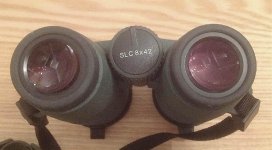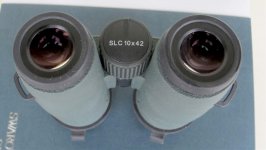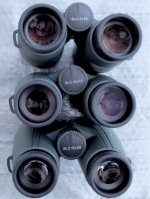SeldomPerched
Well-known member
On the subject of SLC models, I am confused by some of the nomenclature.
In Roger Vine's Scope Views review of the 10x42 he calls it HD. Looking at his photos his binoculars look identical in badging and accessories (except for the green case) to the new one I bought this week in the modern looking box and with the latest carry case - a design shared with the EL carry cases. His review example looks modern as it does not have the degrees printed on the focuser, just the SLC 10 x 42 designation, same as on mine.
On the labelling stuck to the box there is no mention of HD.
Somewhere I read a comment (Tobias Mennle possibly) wondering if his review sample was less sharp than a presumably previous HD design.
Can anyone -- John Roberts? -- help? I am very pleased with mine anyway but it would be good to know that is the same model as the review I read in Scope Views.
Tom
In Roger Vine's Scope Views review of the 10x42 he calls it HD. Looking at his photos his binoculars look identical in badging and accessories (except for the green case) to the new one I bought this week in the modern looking box and with the latest carry case - a design shared with the EL carry cases. His review example looks modern as it does not have the degrees printed on the focuser, just the SLC 10 x 42 designation, same as on mine.
On the labelling stuck to the box there is no mention of HD.
Somewhere I read a comment (Tobias Mennle possibly) wondering if his review sample was less sharp than a presumably previous HD design.
Can anyone -- John Roberts? -- help? I am very pleased with mine anyway but it would be good to know that is the same model as the review I read in Scope Views.
Tom







